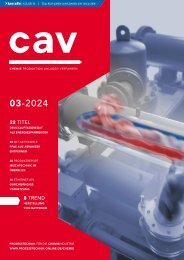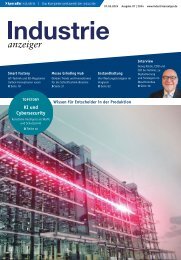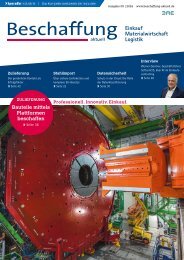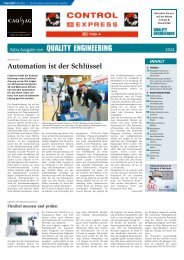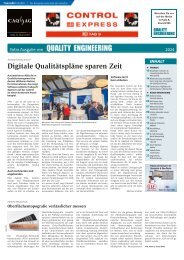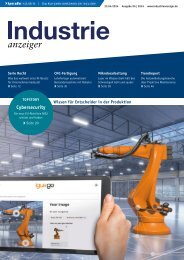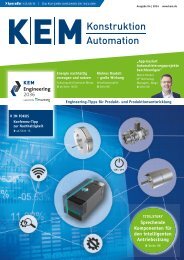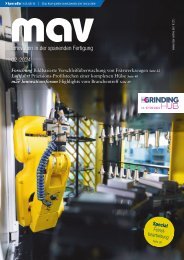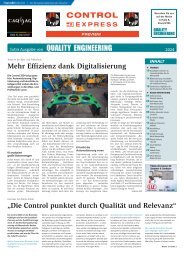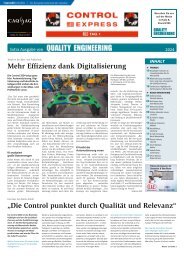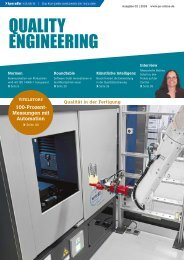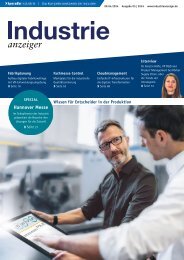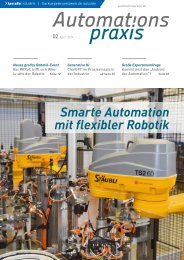EPP Europe P2.2023
Create successful ePaper yourself
Turn your PDF publications into a flip-book with our unique Google optimized e-Paper software.
» PCB & ASSEMBLY<br />
The 5S lean manufacturing methodology in PCB production<br />
Improve benchtop cleaning,<br />
reduce waste with 5S<br />
Developed in Japan, 5S is a workplace organisation method used in physical<br />
manufacturing to eliminate waste. Elizabeth Norwood, Senior Chemist at cleaning<br />
solutions provider MicroCare, reveals how this lean, clean philosophy can be<br />
usefully applied in benchtop cleaning practices.<br />
extremely valuable process in PCB production, and<br />
especially benchtop cleaning. Adopting the 5S lean<br />
manufacturing method can help PCB manufacturers<br />
achieve better cleaning results at the benchtop, and<br />
thus increase efficiency and yield by reducing the<br />
number of faulty components and boards that land<br />
in the scrap pile.<br />
Optimising cleaning<br />
tools and workflow<br />
will lead to increased<br />
efficiency and reduced<br />
waste<br />
Although PCB shortages may be starting to stabilise,<br />
but the electronics industry continues to<br />
feel their impact. Exacerbating this issue for PCB<br />
manufacturers is the fact that the electronic components<br />
market continues to rapidly expand – with the<br />
sector predicted to grow by USD 122.44 billion (EUR<br />
116 billion) between 2022 and 2027, at a CAGR of<br />
7.02%. To avoid delays, PCB fabricators must find<br />
flexible and innovative strategies to ensure production<br />
continues. Options may include modifying designs or<br />
using alternative parts, but there is a more obvious<br />
solution: increase efficiency by decreasing waste.<br />
Electronics manufacturers must implement<br />
methods to ensure every electronic component is optimally<br />
utilised. An effective way to do this is to<br />
adopt tried and tested lean manufacturing processes<br />
such as the 5S methodology. This approach benefits<br />
all kinds of production environments and can be an<br />
Source: MicroCare<br />
What is 5S?<br />
The 5S philosophy can be summed up as: ‘a place<br />
for everything and everything in its place’. The name<br />
refers to five Japanese words beginning with ‘S’ that<br />
represent a 5-step process to organize the working<br />
environment. These terms can be translated into 5<br />
comparable English words:<br />
• Seiri/Sort: Separate tools/components that are<br />
necessary from those that are not.<br />
• Seiton/Set: Organise and categorise tools/components<br />
for ease of access and ease of use.<br />
• Seiso/Shine: Clean up the working environment.<br />
• Seiketsu/Standardise: Create standards and guidelines<br />
to uphold these practices.<br />
• Shitsuke/Sustain: Follow the first four ‘S’s on a<br />
long-term basis by always maintaining the correct<br />
procedures.<br />
Toyota first introduced something akin to the 5S<br />
methodology into its production in the 1950s – hoping<br />
to reduce manufacturing waste and inefficiency.<br />
It was discovered that by applying what later became<br />
known as the 5S concept, production ran more<br />
effectively because the workplace was clean and<br />
well-organised. This made it easier to see defects, all<br />
of which ultimately reduced waste and improved<br />
quality and output.<br />
The 5S strategy offers a large number of benefits<br />
to companies that adopt it. As well as reducing<br />
waste and optimising productivity, it also helps to<br />
enhance safety, improve quality and reduce costs. It<br />
is estimated that efficiency gains of 10% to 30% can<br />
be achieved using this method.<br />
44 <strong>EPP</strong> <strong>Europe</strong> » 11 | 2023



